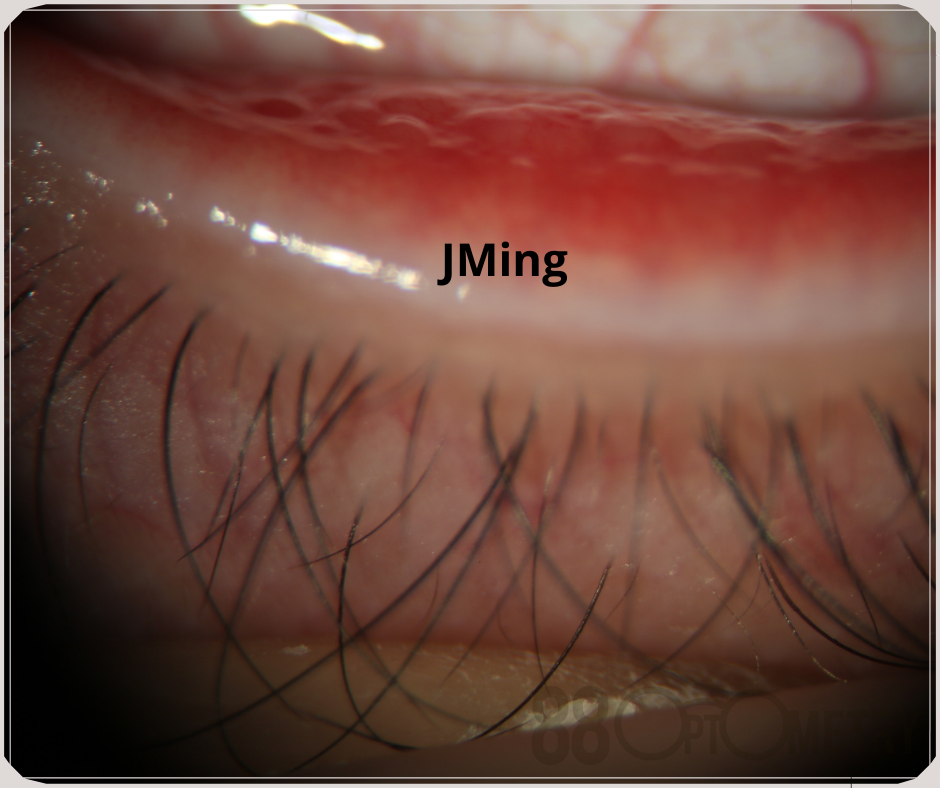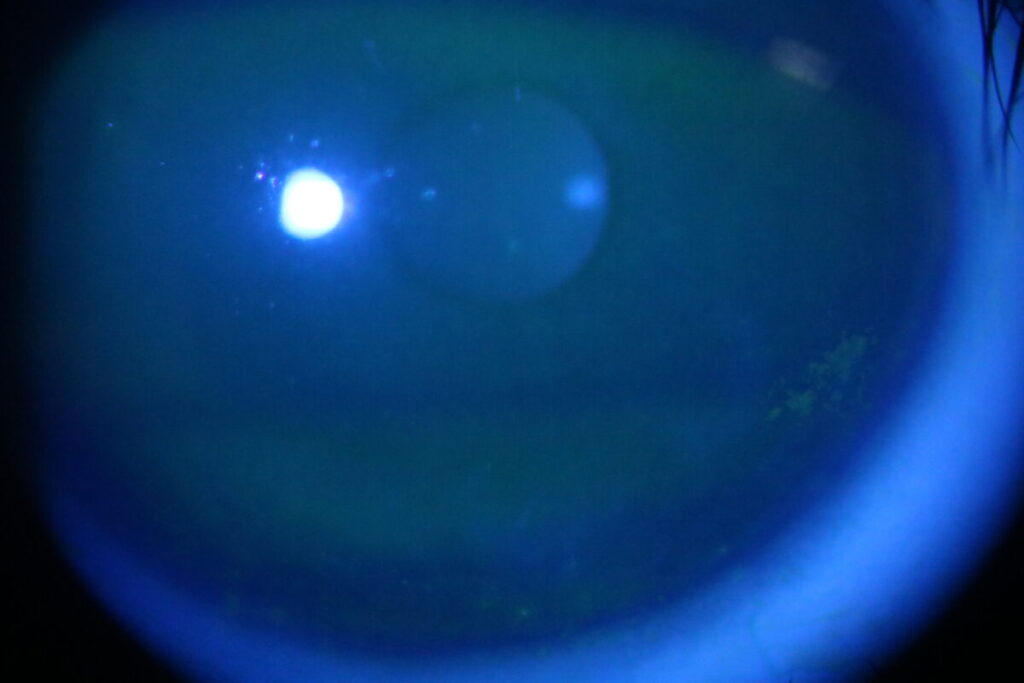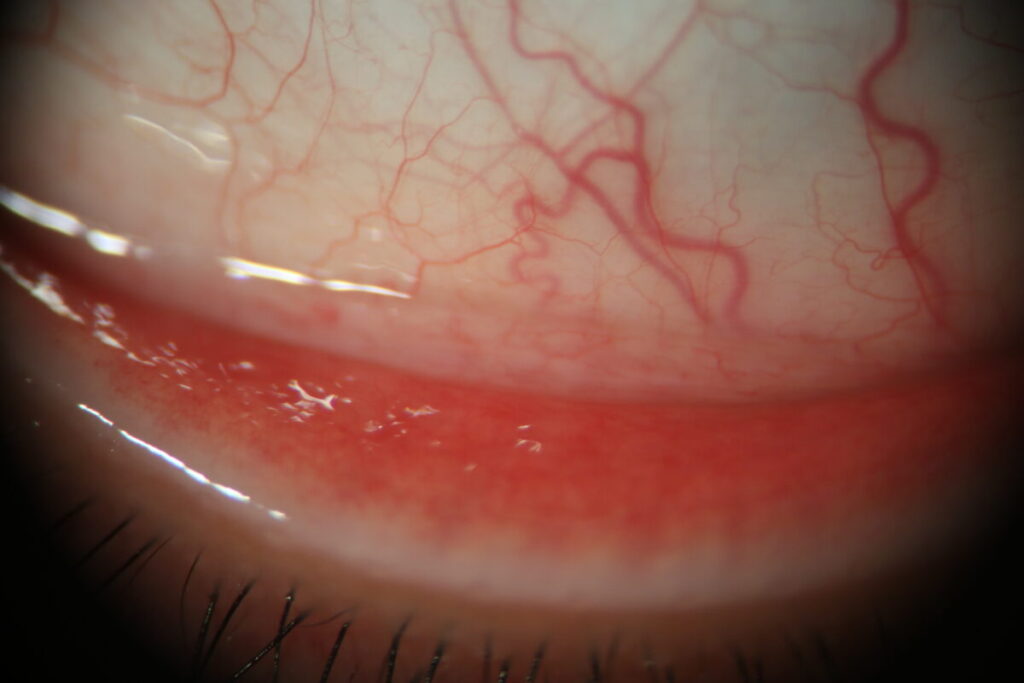JMing (M/10) came with broken glasses. He has worn his glasses for about 1.5 years with no complaint.
Upon examination, his new short-sighted power is -300 & astigmatism power of -100 for both eyes. His short-sighted power has increased 050 in both eyes and astigmatism power also increases 050 in both eyes. For children, we want to see power increment of no more than 050 in a year. Imagine if a child’s power increases by lets say 100/year.. by the time he finishes school, eye power can easily be 1000. For JMing, the trend of power increment is seen here.
Myopia control is an ongoing journey for your child’s vision as he/she will spend the coming 15+ years picking up knowledge & life experiences by seeing, reading, exploring… all with his/her eyes along with other senses.
By monitoring your child’s vision every 6 month, we are able to detect the slightest change in your child’s vision, so we feedback & reinforce accordingly with your child.
For example, your child comes back at 6 months follow up, we find that his power has increased 025, then we know something is not right.. in which we must investigate by getting to know his reading habit, his visual demand.
So, 6months follow up also allows us to reinforce proper visual hygiene, making sure he continues to follow & understand on the required visual hygiene that he is responsible on now. Children are more than happy to take up responsibility during his growing up.
The things that we emphasise on your child’s vision are what we term SARANGHAE:
S : sit up to see phone/read
A : annual eye examination
R : regular breaks (20-20-20 rules)
A : adequate/enough lighting
N : NO eye rubbing
G : glasses – wear your glasses as advised
H : Harmon distance – hold reading material at elbow’s distance to our eyes
A : artificial tears eye drops (dry eyes/itchy/uncomfortable)
E : ergonomic of work desk & proper posture
All these proper visual hygiene will ensure our eyes are happy & healthy! Power progression is well-controlled and everyone is happy! Hoorayyyyy
TQ Cindy & JMing for your trust & support! 🙂
_________________________
* Updated (August 2021)
JMing (M/11) came in after 1year, with complaint of difficulty to focus during online learning & mother reported that he always rubs his eyes these days.
Vision with existing glasses of 1year
R: -3.00/-1.00×175 (6/15-)
L: -3.00/-1.00×170 (6/18+)
Examination shows:
R: -3.50/-2.00×175 (6/6), N5@40cm
L: -3.50/-2.00×170(6/6), N5@40cm
Astigmatism of -1.75 is preferred binocularly
Other assessments show:
Examination of Eye Alignment/Vergence (Cover Test)
orthophoria @Distance
small XP, fast then moderate recovery @Near
(normal value: orthophoria/NMD-No Movement Detected or small XP fast recovery)
ET = Esotropia is misalignment of the eye, eye is deviated inwards
XT = Exotropia is misalignment of the eye, eye is deviated outwards
Examination of Eye Alignment (Howell Card)
Distance: 2 – 4 XP
Near: 2 -> 4 -> 6 -> 4 XP
+1.00 Near: 10 – 12 XP
+0.50 Near: 2 -> 4 -> 6 -> 4 XP
(normal value: 1 EP-0 or 0-3 XP @Distance & 0-6 XP @Near)
EP = Esophoria is misalignment of the eye, eye is deviated inwards
XP = Exophoria is misalignment of the eye, eye is deviated outwards
NRA (accommodation analysis – ability to relax accommodation)
+1.25
(normal value: +1.50 to +2.50)
PRA (accommodation analysis – ability to stimulate accommodation)
-0.75
(normal value: -1.37 to -3.37)
After 1 year on myopia control lenses during this pandemic, JMing has increment of 050 shortsighted power in both eyes. But, his astigmatism increases 075 quite a bit in both eyes. Therefore, eye rubbing is a big no no in children. If children keep rubbing their eyes due to itchiness, this may cause astigmatism to increase too.
He has significant papillae underneath his lids & mild reddish eyes that may correlate with his eye itch. Upon fluorescein testing, he also has dry eyes on nasal & inferior part of right eye as well as inferior part on left eye.
We refer JMing to see an eye doctor/ophthalmologist for his significant papillae & dry eyes.


…………………………………………………………..
*UpdatedA October 2021
Examination shows:
R: -3.75/-1.00×180 (6/6) (+1.00 blur lens test 6/9-) N5@38cm
L: -4.00/-1.00×175 (6/6) (+1.00 blur lens test 6/9-) N5@38cm [L: left dominant eye]
Other assessments show:
Examination of Eye Alignment/Vergence (Cover Test)
NMD @ Distance
small XP, fast recovery @ Near
(normal value: orthophoria/NMD-No Movement Detected or small XP, fast recovery)
EP = Esophoria is misalignment of the eye, eye is deviated inwards
XP = Exophoria is misalignment of the eye, eye is deviated outwards
Examination of Eye Alignment/Posture (Howell Card) by 6^ Base Down on Right eye
Distance: 2 <–> 4 XP (blue part)
Near: 8 <–> 6 <–> 4 <–> 2 XP (blue part)
+1.00 Near: 8 <–> 10 XP (blue part)
(normal value: 0-1 EP or 0-3 XP @Distance and 0-6 XP @Near)
EP = Esophoria is misalignment of the eye, eye is deviated inwards
XP = Exophoria is misalignment of the eye, eye is deviated outwards
NPC (Convergence – ability of eye to maintain a single clear near image) by RAF rule
12/19cm, 16/24cm, 21/28cm
(normal value: Break/Recovery in less than 10cm or to the nose, TTN)
AA (Accommodation/Focusing – eye stamina/ability of eye to focus & sustain seeing near clearly) by RAF rule
R: 7cm, 7cm, 7cm
L: 7cm, 7cm, 7cm
(normal value: 7cm for 11YO)
NRA (Accommodation analysis – ability to relax accommodation) by plus lens
+1.25
(normal value: +1.50 to +2.50)
PRA (Accommodation analysis – ability to stimulate accommodation) by minus lens
-0.75
(normal value: -1.37 to -3.37)
Facility (Accommodation facility – ability to change focus: far to near or near to far) by Flipper +/- 2.00
R: 11 cycle per minit(cpm), difficult with plus lens
L: 14 cycle per minit(cpm), difficult with plus lens
BE: 11 cycle per minit(cpm), difficult with minus lens
(normal value:
Monocular or R/L: 6cpm to 16cpm
Binocular or BE-both eyes: 4cpm to 14cpm)
Examination of Fusional Reserves (Convergent/Divergent reserve stamina) by Prism Bar
Near, Base-Out/Convergent, PFV: 4/12/4
Near, Base-In/Divergent, NFV: 4/12/8
(normal value: Blur/Break/Recovery)
Near, PFV: 16/15-31/10-22
Near, NFV: 13/7-17/3-11
[Scheiman et al, 1989]
[Interpupillary distance, PD: 5.5cm]
_____________________________
*UpdatedB 4/3/2022
JMing (M/12) came for eye examination, mother Cindy shares that JMing has been diagnosed with thyroid.. causing his eyes bulging out & dry eyes. He has been very thin too. According to Cindy, JMing’s father also has thyroid.
Eye prescription
R: -3.75/-1.50×175 (6/6)
L: -4.50/-1.50×175 (6/6)
Other assessments show:
Examination of Eye Alignment/Vergence (Cover Test)
NMD @Distance
small XP, fast recovery @Near
(normal value: orthophoria/NMD-No Movement Detected or small XP, fast recovery)
EP = Esophoria is misalignment of the eye, eye is deviated inwards
XP = Exophoria is misalignment of the eye, eye is deviated outwards
Examination of Eye Alignment/Posture (Howell Card) by 6^ Base Down on Right eye
Distance: 0 – 2 XP (blue part)
Near: 0 (top arrow paces around 0, slightly to yellow & blue)
+1.00 Near: 2 – 4 XP (blue part)
-1.00 Near: 1 – 3 EP (yellow part)
(normal value: 0-1 EP or 0-3 XP @Distance; and 0-6 XP @Near)
EP = Esophoria is misalignment of the eye, eye is deviated inwards
XP = Exophoria is misalignment of the eye, eye is deviated outwards
NRA (Accommodation analysis – ability to relax accommodation) by plus lens
+1.50
(normal value: +1.50 to +2.50)
PRA (Accommodation analysis – ability to stimulate accommodation) by minus lens
-1.00
(normal value: -1.37 to -3.37)
MEM – Monocular Estimation Method (Accommodation lag – to measure accommodation response seeing near target)
R: +0.50 (sometimes PL)
L: +0.50
(normal value: +0.25 to +0.75)
Accommodation Facility – ability to change focus: far to near or near to far (by Flipper +/- 2.00)
BE: 14 cycle per minit(cpm), difficult with minus lens(2nd lens)
R: 14 cycle per minit(cpm), difficult with minus lens(2nd lens) [both eyes see better than with right eye]
L: 13 cycle per minit(cpm), difficult with minus lens(2nd lens) [both eyes see better than with left eye]
(normal value: 1 cycle = 2 words read
Monocular or R/L: 6cpm to 16cpm
Binocular or BE-both eyes: 4cpm to 14cpm)
Fusional Reserves (Convergent/Divergent reserve stamina) by Prism Bar
Near, Base-In/Divergent, NFV: 6/4
Near, Base-Out/Convergent, PFV: 8/14/12
Distance, Base-Out/Convergent, PFV: 6/4
Distance, Base-In/Divergent, NFV: 6/4
(normal value: Blur/Break/Recovery)
Near, PFV: x/15-31/10-22
Near, NFV: x/7-17/3-11
[Scheiman et al – Children 7-12yo Data]
AA (Amplitude Accommodation/Focusing – eye stamina/ability of eye to focus & sustain seeing near clearly) by RAF rule
R: 20 YO, 20 YO, 12 YO, 20 YO
L: 12 YO, 12 YO, 12 YO, 12 YO
(normal value: AA goes according to age; YO=years old)
NPC (Convergence – ability of eye to maintain a single clear near image) by RAF rule
TTN, TTN, TTN, TTN, 6/8cm, 6/8cm
(normal value: Break/Recovery in less than 10cm or to the nose, TTN)
Vergence Facility – ability to make rapid repetitive vergence changes (by Prism Flipper of 12Base Out & 3Base In)
Near: 5 cpm (difficulty with Base-Out & Base-In)
Distance: 3 cpm (difficulty with Base-Out & Base-In)
(normal value: 1 cycle = 2 times clearing target
Distance: 12-18 cpm
Near: 12-18 cpm)
3D Vision (Random Dot 3S)
32″ (after 100″ slow to identify accurately.. repeated testings to reach 32″, 1-2 miss in between)
(normal value: 12.5″)
Interpupillary Distance = 5.5cm
– Add is favoured, so we prescribe with Add: +0.75
*UpdatedC
Previously, JMing reported seeing words that dance on book print.. we ask whether or not he still sees it, he said no more “dancing words” now.. even though he reads for long periods of time. He is using non-preserved artificial tears daily.. that he took out from his pocket of school pants to show us. He does not have itchy eyes already and he no longer rubs his eyes now.
Vision without glasses
R: 6/60-
L: 6/60- (better)
Vision with existing glasses
R: -3.75/-1.50×175 (6/6)
L: -4.25/-1.50×175 (6/6) L>R
Add: +0.75 (R>L)
Other assessments show: (with habitual glasses)
Examination of Eye Alignment/Vergence (Cover Test, CT)
NMD @Distance
(alternating CT: upon covering left eye, patient reported the target goes to his right.. when covering right eye, the target goes to his left)
small XP, fast recovery @Near
(alternating CT: upon covering left eye, patient reported the target goes to his left.. when covering right eye, the target goes to his right)
(normal value: orthophoria/NMD-No Movement Detected or small XP, fast recovery)
EP = Esotropia/Esophoria is misalignment of the eye, eye is deviated inwards
XP = Exotropia/Exophoria is misalignment of the eye, eye is deviated outwards
Examination of Eye Alignment/Posture (Howell Card) by 6^ Base Down on Right eye
Distance: 2 – 4 XP (blue part)
Near: 8 – 10 XP (blue part)
-1.00 Near: 1 – 3 EP (yellow part)
(normal value: 0-1 EP (yellow part) or 0-3 XP (blue part) @Distance; and 0-6 XP (blue part) @Near)
EP = Esophoria is misalignment of the eye, eye is deviated inwards
XP = Exophoria is misalignment of the eye, eye is deviated outwards
NRA (Accommodation analysis – ability to relax accommodation) by plus lens
+1.25
(normal value: +1.50 to +2.50)
PRA (Accommodation analysis – ability to stimulate accommodation) by minus lens
-0.75
(normal value: -1.37 to -3.37)
NPC (Convergence – ability of eye to maintain a single clear near image) by RAF rule
7/9cm, 7/9cm, 7/9cm, 7/9cm, 7/9cm
(normal value: Break/Recovery in less than 10cm or to the nose, TTN)
AA (Amplitude Accommodation/Focusing – eye stamina/ability of eye to focus & sustain seeing near clearly) by RAF rule
R: 18 YO, 18 YO, 18 YO (pt reported target is clear @end of RAF rule)
L: 15 YO, 15 YO, 15 YO (pt reported target is clear @end of RAF rule)
(normal value: AA goes according to age; YO=years old)
Facility (Accommodation facility – ability to change focus: far to near or near to far) by Flipper +/- 2.00
BE: 11 cycle per minit(cpm), difficult with minus lens(2nd lens)
R: 12 cycle per minit(cpm), difficult with minus lens(2nd lens) (right eye sees better than with both eyes)
L: 13 cycle per minit(cpm), difficult with minus lens(2nd lens) (both eyes see better than with left eye)
(normal value: 1 cycle = 2 words read
Monocular or R/L: 6cpm to 16cpm
Binocular or BE-both eyes: 4cpm to 14cpm)
MEM – Monocular Estimation Method (Accommodation lag – to measure accommodation response seeing near target)
R: +0.75
L: +0.75
(normal value: +0.25 to +0.75)
Fusional Reserves (Convergent/Divergent reserve stamina) by Prism Bar
Near, Base-Out/Convergent, PFV: x/10/6
Near, Base-In/Divergent, NFV: x/12/8
Distance, Base-Out/Convergent, PFV: x/16/10
Distance, Base-In/Divergent, NFV: x/12/8
(normal value: Blur/Break/Recovery)
Near, PFV: x/15-31/10-22
Near, NFV: x/7-17/3-11
[Scheiman et al – Children 7-12yo Data]
Vergence Facility – ability to make rapid repetitive vergence changes (by Prism Flipper of 12Base Out & 3Base In)
Near: 7 cpm (double with Base-Out & Base-In, regain single faster with Base-Out than Base-In)
Distance: 7 cpm (double with Base-Out & Base-In, regain single faster with Base-In than Base-Out)
(normal value: 1 cycle = 2 times clearing target
Distance: 12-18 cpm
Near: 12-18 cpm)
Interpupillary Distance = 5.5cm



We will see him in 4months.

